14 Gorgeous Flowers That Thrive in Sunny Gardens
If your garden basks in sunlight, you are in luck. There are plenty of flowers that love soaking up the sun and will reward you with a colorful display. From striking blooms to fragrant flowers, sun-loving plants can transform any outdoor area. With the right care, these flowers can bring year-round beauty. Read on to find out which ones are perfect for your sun-soaked garden.
This post may contain affiliate links, which helps keep this content free. Please read our disclosure for more info.
Sunflower
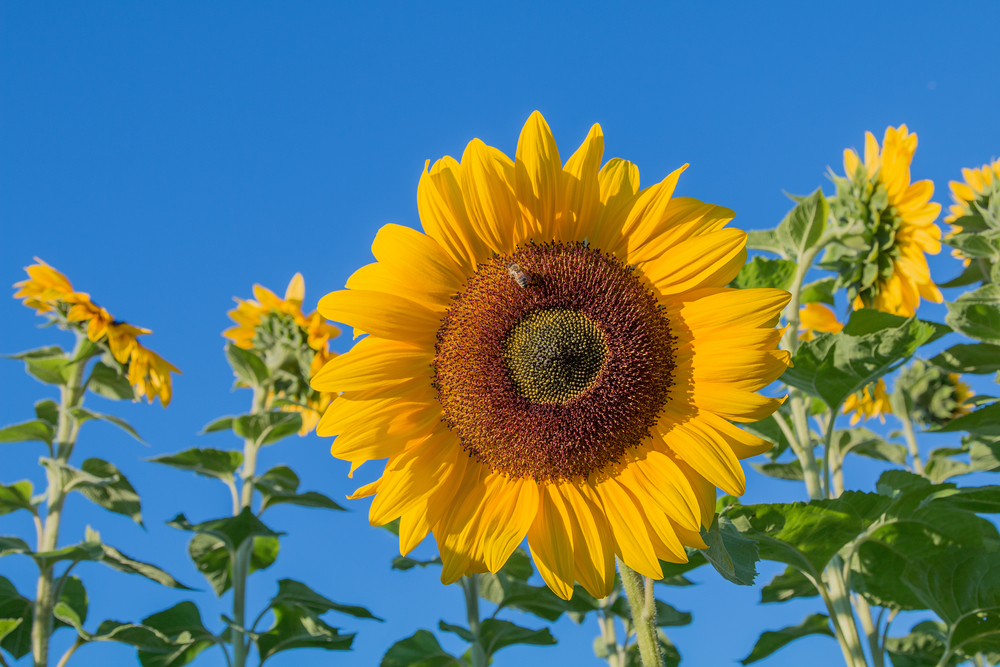
Sunflowers are a classic choice for any sun-filled garden. Known for their tall stalks and large, yellow blooms, they thrive in full sunlight and poor soil. These flowers attract pollinators such as bees and birds, making them a great addition to any garden. Sunflowers grow quickly, often reaching heights of up to 10 feet in the right conditions.
Beyond their size, sunflowers are easy to care for, requiring minimal watering once established. They are perfect for adding height to a garden and creating a stunning focal point. Planting sunflowers in clusters enhances their effect and helps create a natural, rustic feel. Their seeds can even be harvested to make delicious snacks or bird feed.
Lavender
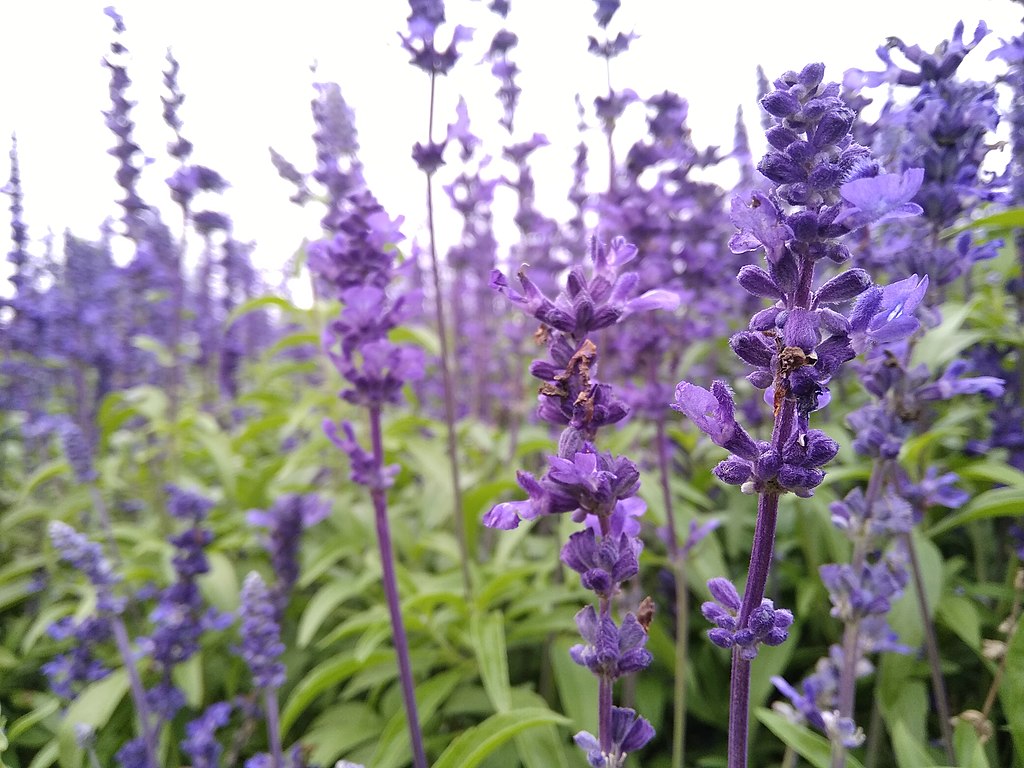
Lavender is an aromatic herb known for its vibrant purple flowers and calming scent. It thrives in sunny, dry conditions, making it ideal for sun-kissed gardens. Lavender is a low-maintenance plant, requiring well-drained soil and minimal watering once established. Its fragrant blooms also attract pollinators like bees and butterflies.
In addition to its beauty, lavender is also used in a variety of household products, from essential oils to sachets. It is perfect for edging garden beds or planting in containers. The plant’s gray-green foliage adds texture and contrast to colorful blooms. Lavender is also drought-tolerant, making it an excellent choice for areas with less rainfall.
Coneflower (Echinacea)
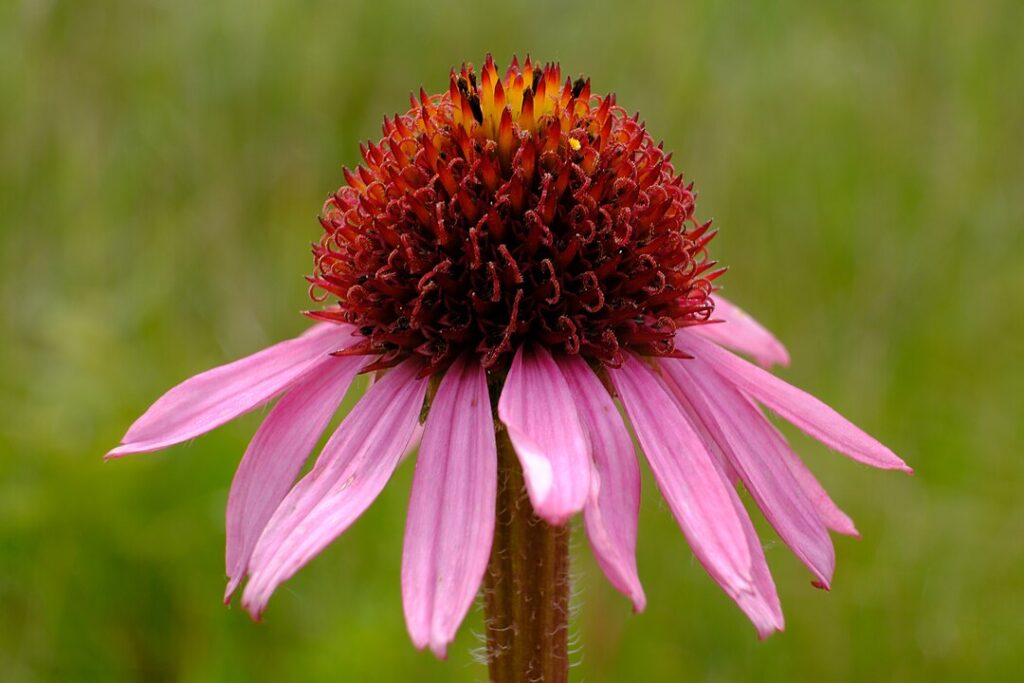
Coneflowers are hardy perennials that thrive in full sun. With their daisy-like appearance and purple, pink, or white petals, they add a cheerful pop of color to any garden. These flowers are not only beautiful but also have medicinal properties, as they are known to boost the immune system. Coneflowers are easy to grow and care for, requiring only occasional watering.
They are also drought-resistant and can withstand a variety of soil types. These plants bloom throughout the summer and into fall, making them a great choice for long-lasting color. Coneflowers attract pollinators, including bees and butterflies, which helps support local ecosystems. Their seeds are also favored by birds, making them beneficial for wildlife.
Zinnia
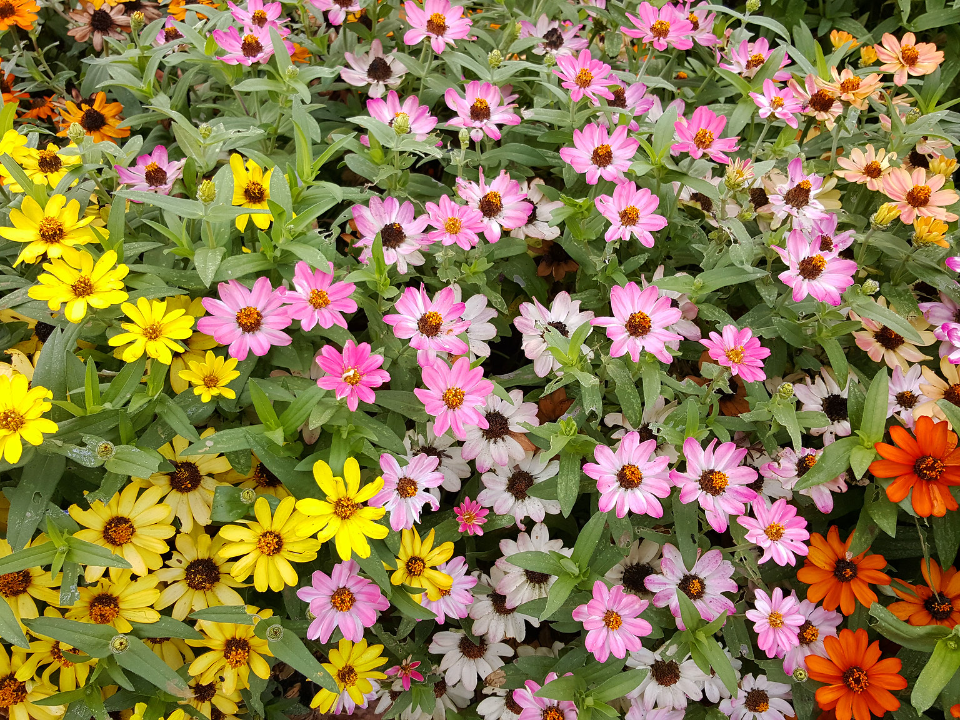
Zinnias are vibrant, fast-growing annuals that thrive in sunny gardens. Known for their bold colors, zinnias come in shades of red, pink, orange, and yellow. They are easy to grow from seed and bloom profusely, providing a burst of color throughout the summer. Zinnias are also heat-tolerant, making them a perfect fit for hot, sunny spots.
In addition to their bright flowers, zinnias are low-maintenance and require only occasional watering. They also attract butterflies, adding movement and life to the garden. Zinnias work well in borders, containers, or as cut flowers in vases. Their ability to thrive in poor soil makes them a favorite among gardeners.
Coreopsis
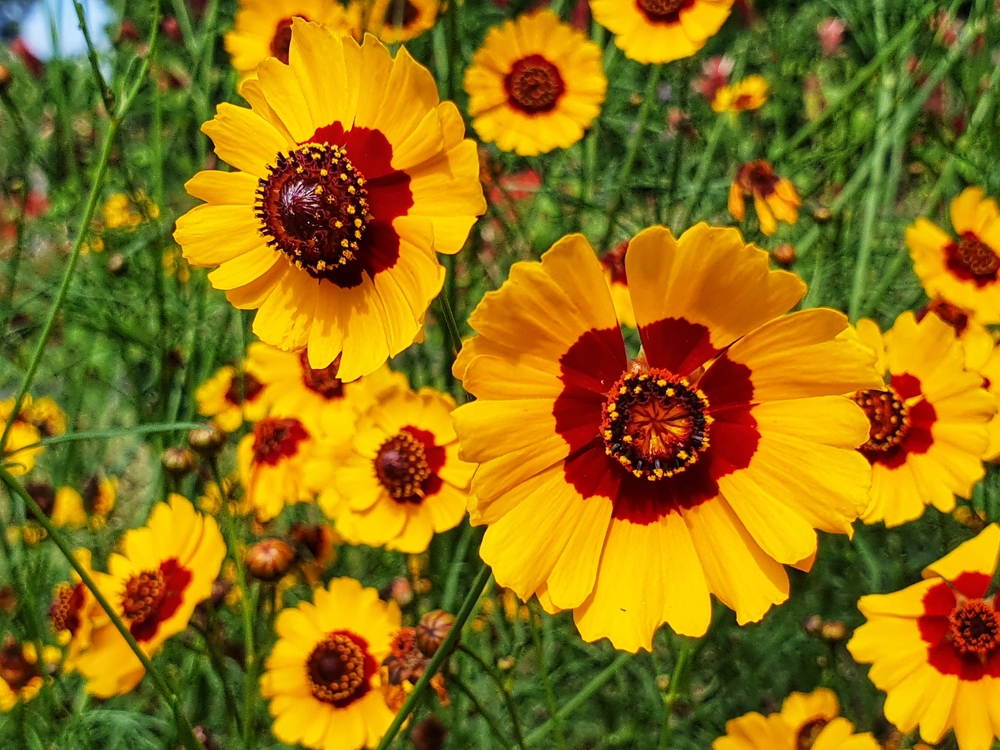
Coreopsis, also known as tickseed, is a cheerful perennial that flourishes in full sun. It produces bright yellow or orange daisy-like flowers that bloom from late spring to early fall. Coreopsis is known for its resilience, growing in a wide range of soils, even those that are somewhat dry. This makes it a perfect addition to sun-drenched gardens with minimal maintenance.
The plant’s long-lasting blooms are attractive to pollinators such as bees and butterflies. Coreopsis is also drought-tolerant once established, requiring little water during hot summer months. It grows in a compact, bushy form, making it ideal for filling in gaps or as a border plant. With its cheerful flowers, coreopsis adds an uplifting touch to any sunny garden.
Black-eyed Susan
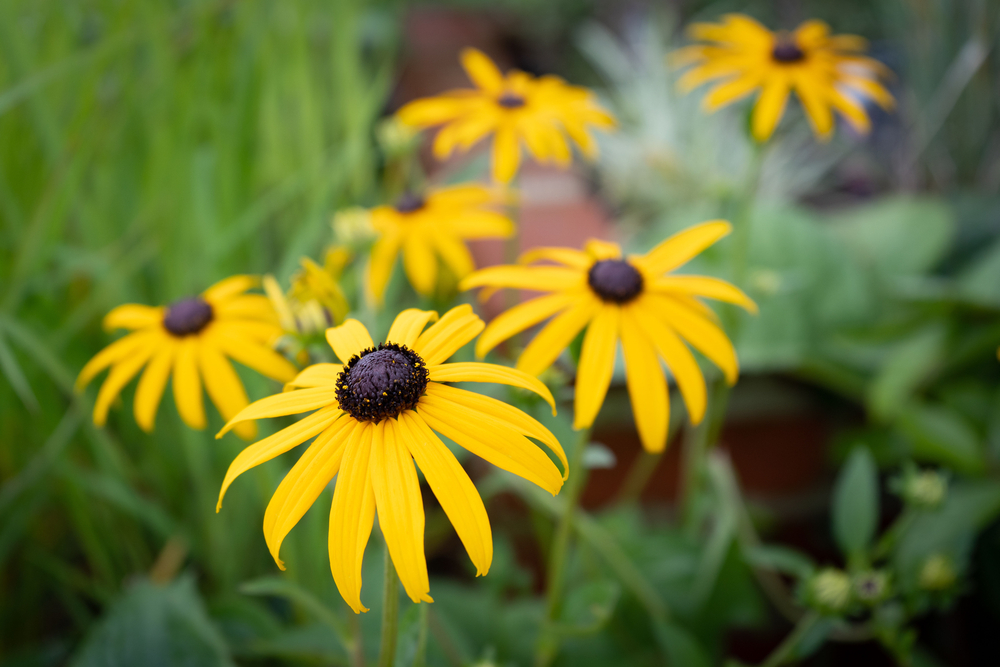
Black-eyed Susan is a hardy, sun-loving perennial known for its golden-yellow petals and dark center. These flowers are perfect for adding color and texture to a garden, and they bloom from summer to fall. They grow well in well-drained soil and can handle periods of drought once established. Black-eyed Susans also attract a variety of pollinators, including bees and butterflies.
This plant thrives in sunny spots and adds cheerful brightness to garden beds or borders. Black-eyed Susans are very adaptable, growing well in different soil types, from clay to sandy soils. They are relatively low-maintenance, needing only occasional watering during dry spells. The flowers’ long-lasting bloom period ensures vibrant color for several months.
Marigold
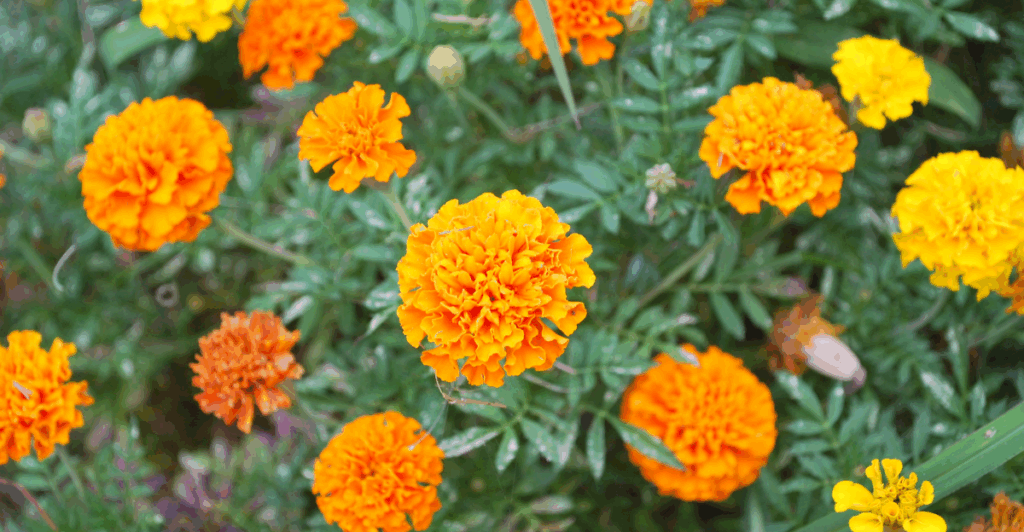
Marigolds are hardy annuals that thrive in full sunlight and well-drained soil. Known for their bright orange, yellow, and red flowers, they are often used to add a pop of color to sunny gardens. Marigolds are also prized for their ability to deter pests, including aphids and mosquitoes, making them a natural addition to vegetable and herb gardens.
These plants are incredibly easy to grow from seed and bloom continuously throughout the summer. Marigolds are drought-tolerant and require minimal care, making them perfect for busy gardeners. They also attract pollinators, including bees and butterflies, which enhances the overall health of your garden. Marigolds can be grown in containers, borders, or as a colorful ground cover.
Gaillardia (Blanket Flower)
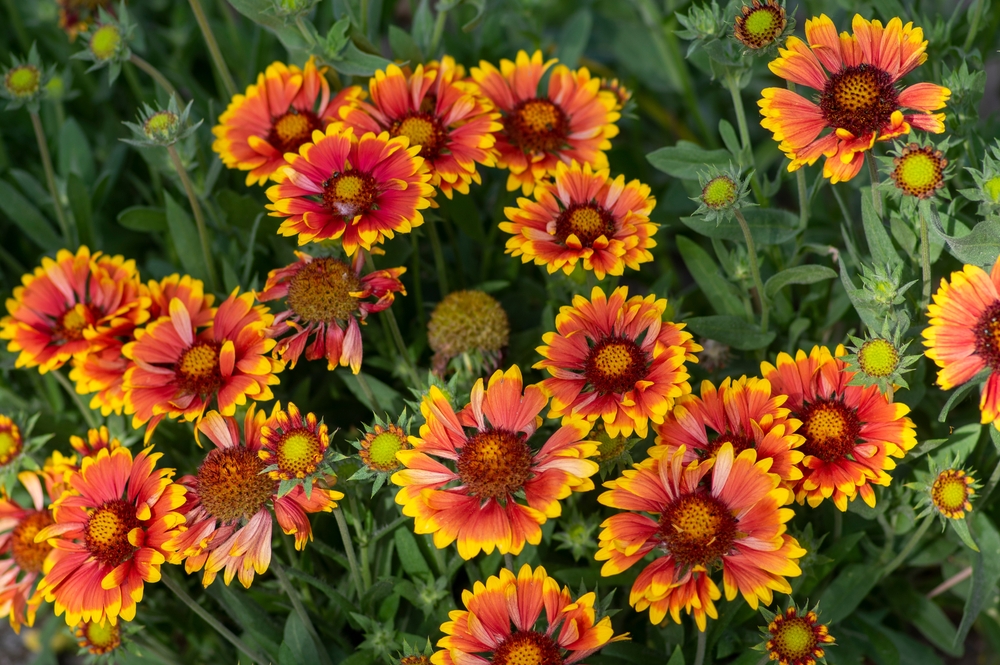
Gaillardia, or blanket flower, is a tough, sun-loving perennial that thrives in dry, well-drained soil. It produces vibrant red, orange, and yellow flowers that resemble a blanket of color across the garden. This plant is known for its resilience, even in hot, dry conditions, making it an excellent choice for sun-drenched gardens. Gaillardia blooms from early summer until fall, providing long-lasting color.
This plant is a magnet for bees and butterflies, making it a great addition to pollinator gardens. Gaillardia is low-maintenance and does well in poor soil, requiring little care once established. It grows in a compact, bushy form, which makes it ideal for filling in garden beds or creating a vibrant ground cover. The bright flowers create a striking contrast against green foliage.
Sedum (Autumn Joy)
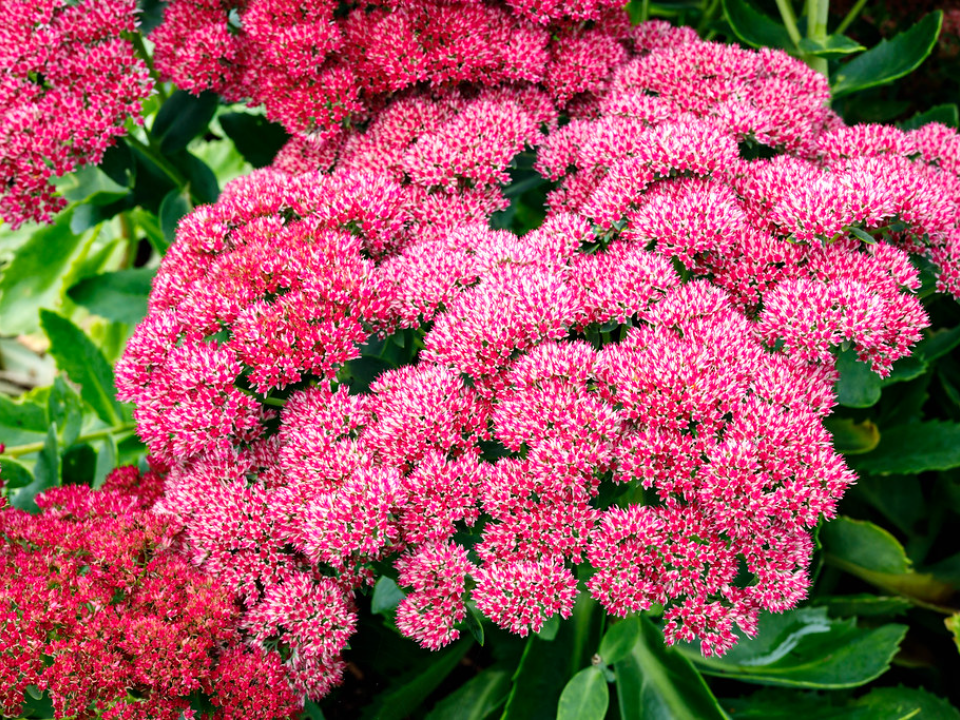
Sedum, also known as “Autumn Joy,” is a succulent that thrives in full sun and well-drained soil. Its thick, fleshy leaves store water, making it a drought-tolerant plant that is perfect for hot, sunny gardens. The plant blooms in late summer to fall, with pink flowers that gradually turn to a deep red as they mature. Sedum is a low-maintenance plant that requires very little watering once established.
The flowers of sedum attract bees and butterflies, making it an excellent choice for pollinator-friendly gardens. Sedum grows well in poor soil and is a perfect fit for rock gardens or garden borders. Its compact growth habit makes it ideal for filling in small spaces, while the flowers provide color well into the fall. Sedum’s ability to thrive in dry conditions makes it a great choice for xeriscaping.
Shasta Daisy
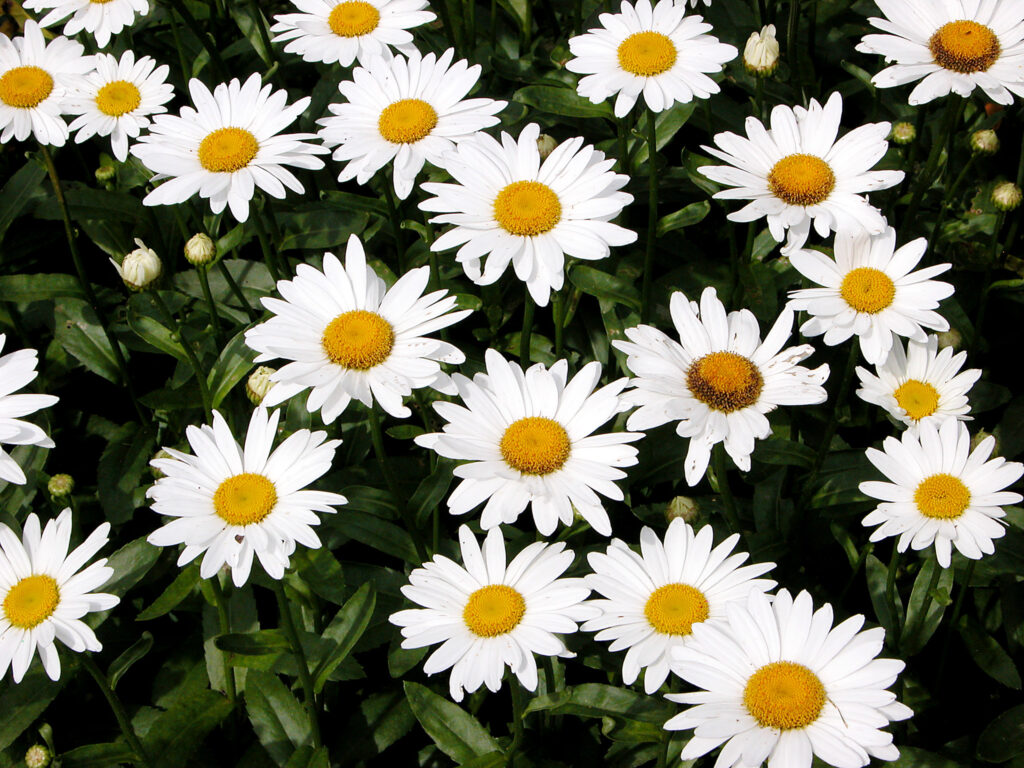
Shasta daisies are bright, cheerful flowers that bloom in full sun throughout the summer. Their white petals and yellow centers make them a classic choice for any sunny garden. These flowers are hardy and easy to grow, thriving in well-drained soil and requiring only moderate watering. Shasta daisies also attract bees and butterflies, making them great for pollinator gardens.
Shasta daisies grow in clumps and spread quickly, filling in spaces with their cheerful blooms. They can be used as a border plant, ground cover, or in containers for a pop of color. Their flowers are long-lasting and can be cut for fresh bouquets. Shasta daisies are low-maintenance, needing only occasional deadheading to keep them blooming.
Daylily
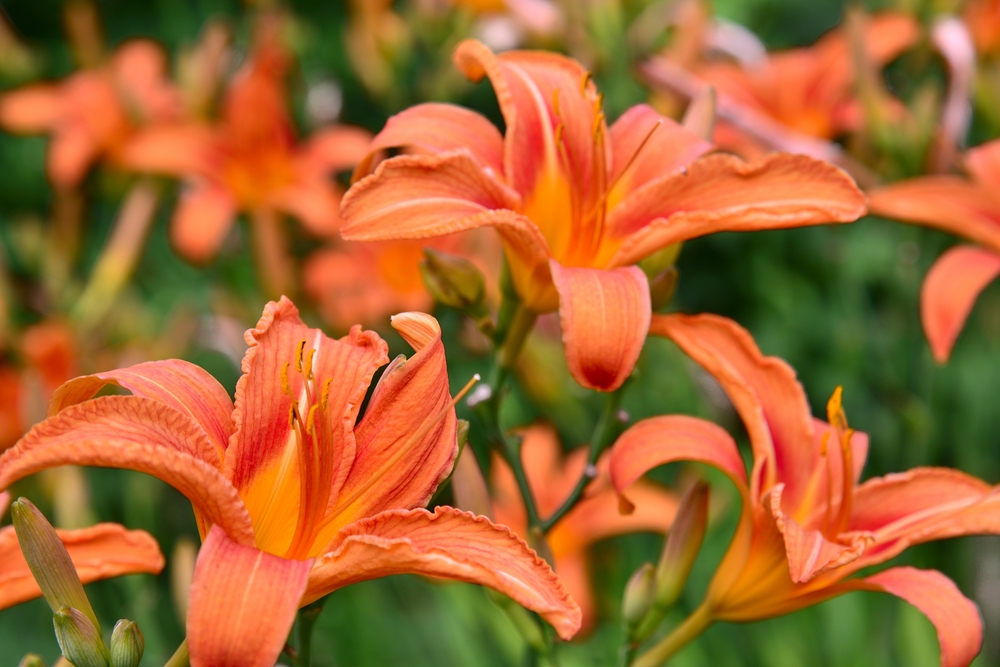
Daylilies are vibrant, perennial flowers that thrive in full sunlight. They are known for their striking blooms, which can come in nearly every color of the rainbow. Daylilies are adaptable and can grow in a wide range of soil types, though they prefer well-drained soil. They are low-maintenance and require minimal care, making them a popular choice for busy gardeners.
The flowers of daylilies typically last only a day, but the plant produces many blooms, ensuring continuous color. They are drought-tolerant and thrive with little watering once established. Daylilies are also resistant to pests and diseases, making them an easy addition to any garden. They work well in borders, containers, or as ground cover in sunny spots.
Petunia
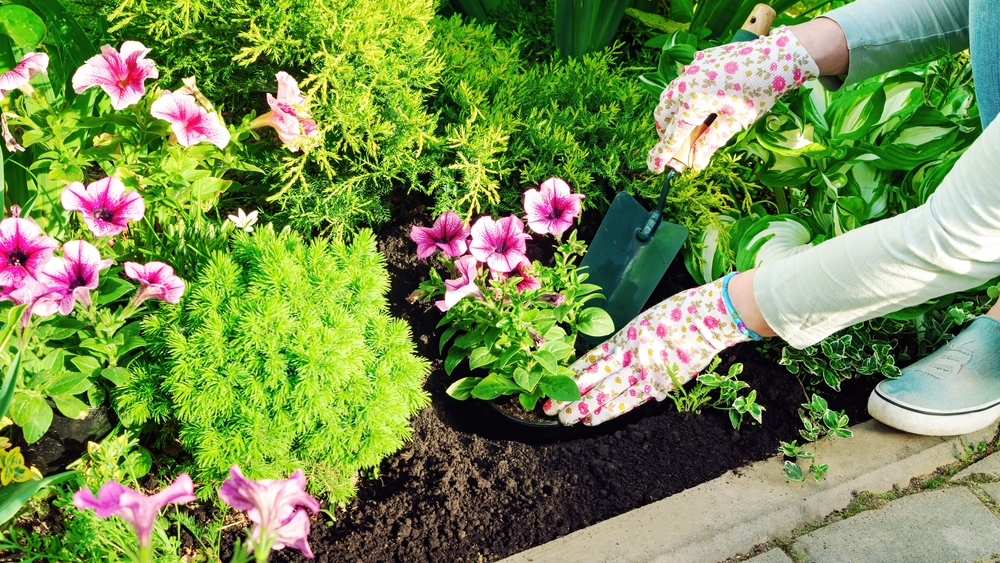
Petunias are annuals known for their vibrant, trumpet-shaped flowers that come in a wide range of colors, from pink to purple, red, and white. These flowers thrive in full sun and require well-drained soil to grow. Petunias are ideal for containers, hanging baskets, or as border plants, providing a splash of color in any garden. They also attract pollinators, including bees and butterflies.
These plants are easy to grow from seed and require minimal care. Petunias bloom profusely throughout the summer and fall, adding a bright touch to sunny gardens. They are ideal for gardeners looking to add continuous color to their landscapes. Petunias benefit from regular deadheading to encourage more blooms and maintain a tidy appearance.
Lantana
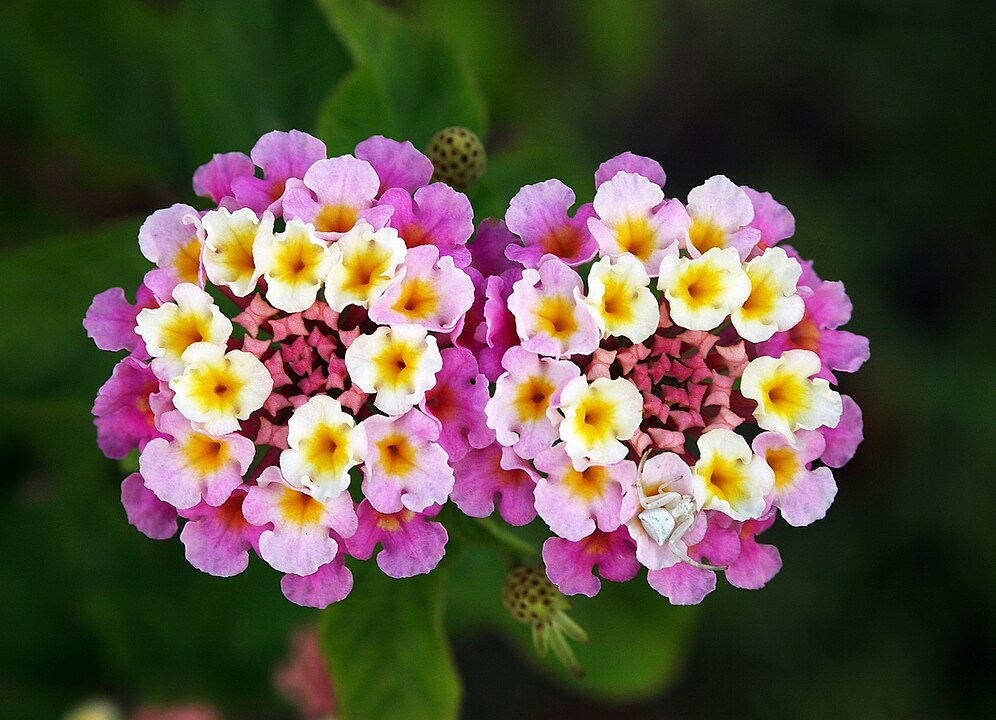
Lantanas are tropical plants known for their bright, multi-colored flowers that thrive in full sun. They are hardy and drought-tolerant, making them perfect for hot, sunny gardens. Lantanas attract a variety of pollinators, including butterflies and hummingbirds, thanks to their nectar-rich blooms. These plants are low-maintenance and do well in poor, well-drained soils.
Lantanas come in a variety of colors, including orange, pink, yellow, and red, and their flowers can change color as they mature. They grow quickly and can be used as ground cover, in hanging baskets, or in containers. Lantanas are heat-tolerant, making them ideal for hot climates. Their vibrant flowers provide long-lasting color throughout the summer and into fall.
Rose
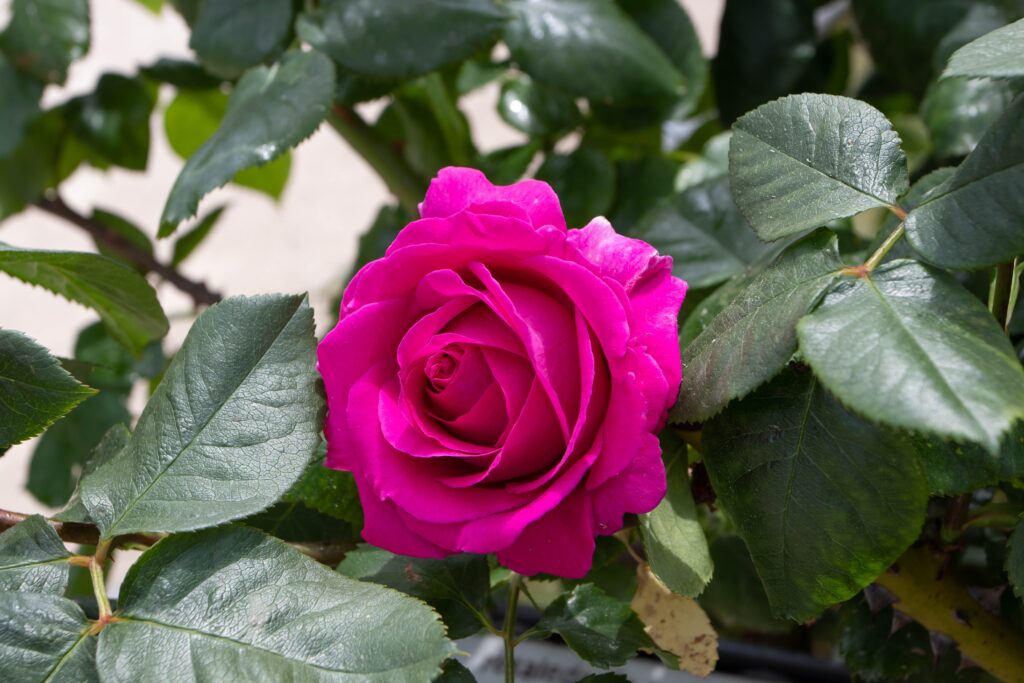
Roses are timeless flowers known for their beauty and fragrance. They thrive in sunny gardens and come in various colors, from deep red to soft pink, white, and yellow. Roses require well-drained soil and regular watering to ensure healthy blooms. While some varieties need more care than others, many are hardy and disease-resistant.
Roses are a symbol of love and romance and are often used in flower arrangements and gardens. They are ideal for adding elegance to any landscape, whether planted in beds, borders, or containers. The flowers bloom in late spring or early summer and continue into fall. Pruning and deadheading will encourage new growth and maintain the plant’s appearance.
This article originally appeared on Avocadu.
